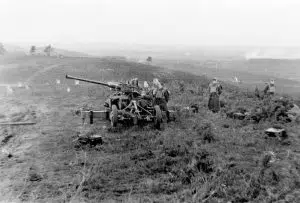2.Roundup 1942 – lost battle before main war
June 6 is marking the 78th time we are commemorating the heroic deed of the Allies forces in 1944. It was the biggest landing operation and included the participation of 200,000 troops. Canadian forces made a great contribution and one of the history artefacts – a Holy Roller tank is now being restored with the help of Fanshawe College. This will be a series of articles revealing the histories leading to this heroic fight.
-“There can be no question of landing on the continent in 1943”, – Winston Churchill after the defeat in the operation “Roundup” on August 19, 1942.
It took allies 3 years to implement a plan to land a large part of the troops from the
British Isles in northern France. Back in autumn of 1941, the British General staff initiated a plan for operation “Roundup”. If successful it would create a second front for the Soviets and distract Germans from invading the USSR. However, the United Kingdom was too weakened by the battles led in the years before.
 “Battle of Britain” – a period of intense air strikes by German Air Forces on all the territory of the U.K made the country vulnerable. Even though its territory was protected by water, the U.K led a campaign in North Africa which made planning for the second European front difficult and tactically impossible to win.
“Battle of Britain” – a period of intense air strikes by German Air Forces on all the territory of the U.K made the country vulnerable. Even though its territory was protected by water, the U.K led a campaign in North Africa which made planning for the second European front difficult and tactically impossible to win.
The Allied forces were about to make a difficult decision. They knew that the success of this operation would make the war end quicker, but the lack of ammunition and soldiers would stop them from approving the plan. Despite the prime minister’s opposition, the operation was adopted without a general strategic plan.
The defeat of the US Navy in Pearl Harbour and the rapid entry of the United States into the war contributed to the situation.
US General George Marshall decided that the operation should be ongoing in Europe. It was scheduled for August 1942. But allies faced a shortage of landing crafts. The landing of Canadian troops still took place near the French city of Dieppe. The site was chosen for its reach by British soldiers. It was planned that the landing forces would seize the port and hold it until the main troops approach.
The operation began in the morning of August 19. 5000 Canadians and 2000 U.K forces faced German defending troops and lost more than 3000 men in 9 hours.
After this failure, the idea of opening a second front in Europe was postponed to an undetermined time. The experience gained near Dieppe was the basis of operation “Overlord” in Normandy in 1944





Comments